Constance Guisset stages a harmonious duet of apartments in monochrome and colour

The bright visual language of industrial designer Constance Guisset has transformed the ground floor of the Swiss Museum of Contemporary Design and Applied Arts (MUDAC) once again. In a bold and somewhat anachronistic move, she has returned the museum’s space to its original historic function – that of a private home – whilst making a decidedly progressive ode to colour.
For ‘Anima’, as the exhibition and accompanying catalogue are called, Guisset has created two almost identical apartments which echo one another; the first in black and white tones, the other in a vivid medley of warm hues. Part retrospective, too, the mirroring rooms are furnished in Guisset’s greatest designs. Among them, her ‘Vertigo’ lamps and ‘Pebble’ sofa for Petite Friture, her Ankara tables, Angelin lamp and – most recognisable of all – her colour wheel ‘Windmills’ poufs.
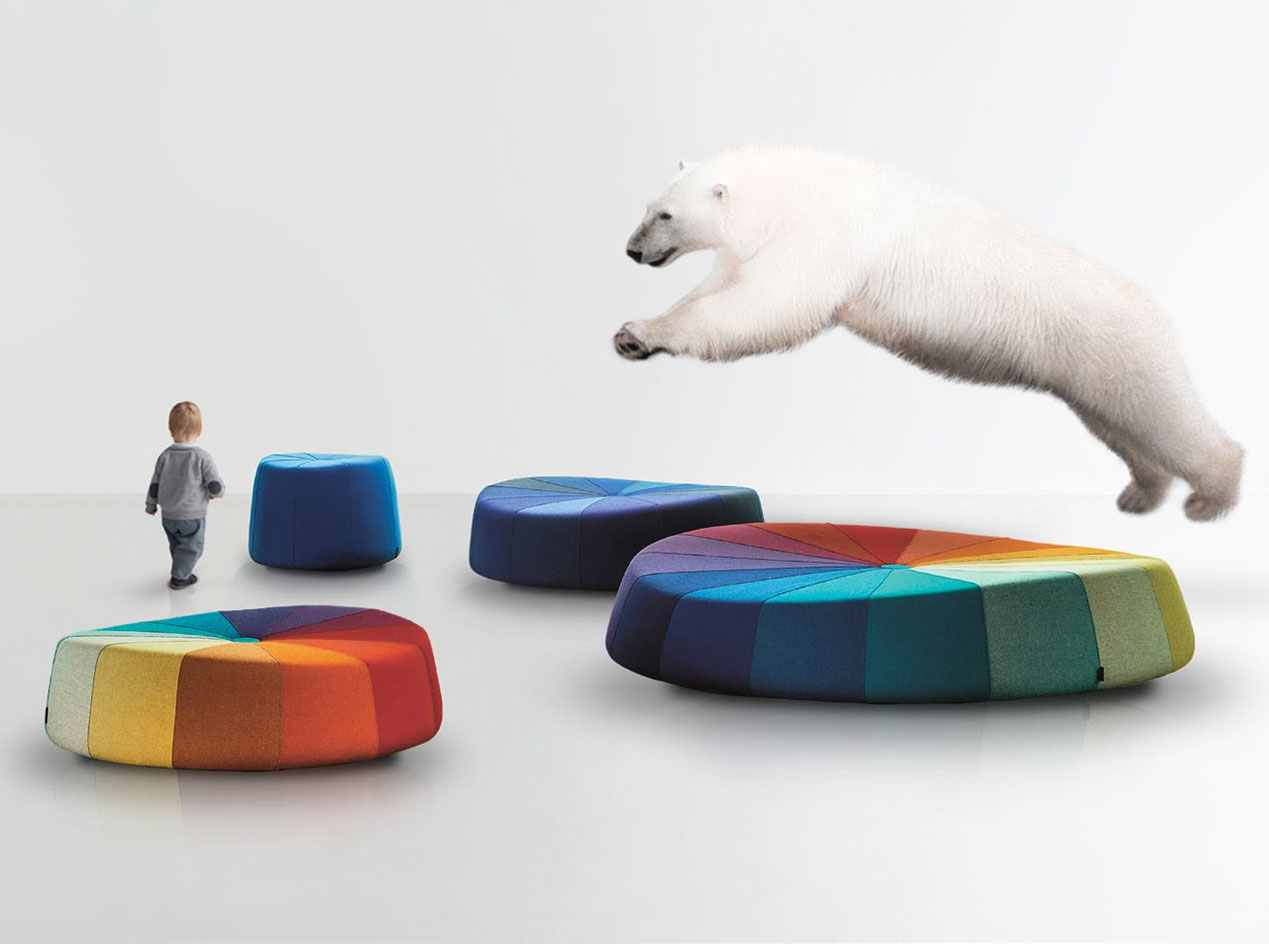
Guisset’s pouf collection ‘Windmills’, pictured, was inspired by chromatic circles; the colour variations and curve of the seat giving the illusion that the poufs are in motion
Beyond the aesthetically pleasing effect of such a theoretically simple juxtaposition, the Parisian designer aims to invite museum goers to sit down and discover new perspectives. To reflect on the properties of a given material, its expressive power, manoeuvrability and functional potential.
Furthermore, it is a whimsical investigation into the expressive potential of cold and warm colour palettes, and their inherent ‘genderisation’ (where cold shades are seen as ‘masculine’ and warmer hues as ‘feminine’). Guisset’s approach rather breaks with convention, showing subtly, but with mischievous glee, the way in which colour, or its absence, can date and animate any given object.
‘To dress objects in colour is to give them materiality, sensuality. The sensation of a coloured effect which, taken in by the eye and retransmitted by the brain, invokes intense emotions,’ she explains discussing why her prototypes and research always begin in a neutral colour palatte. This, she maintains, is when the ‘formal characteristics’ of her objects emerge, before being ‘disguised’ (the Latin word for ‘colour’ comes from ‘celare’, which means ‘to hide’) in chromasticity.
‘Guisset has many surprises in store for us,’ explains MUDAC curator Susanne Hilpert Stuber, ‘with objects hiding into recesses and the partitions of her apartments, like a treasure hunt.’

Restoring the ground floor of the museum to it’s original original historic function – that of a private home – Guisset has created two almost identical apartments which echo one another...

...the first in black and white tones, melting into the second which springs to life with a vivid medley of warm hues.
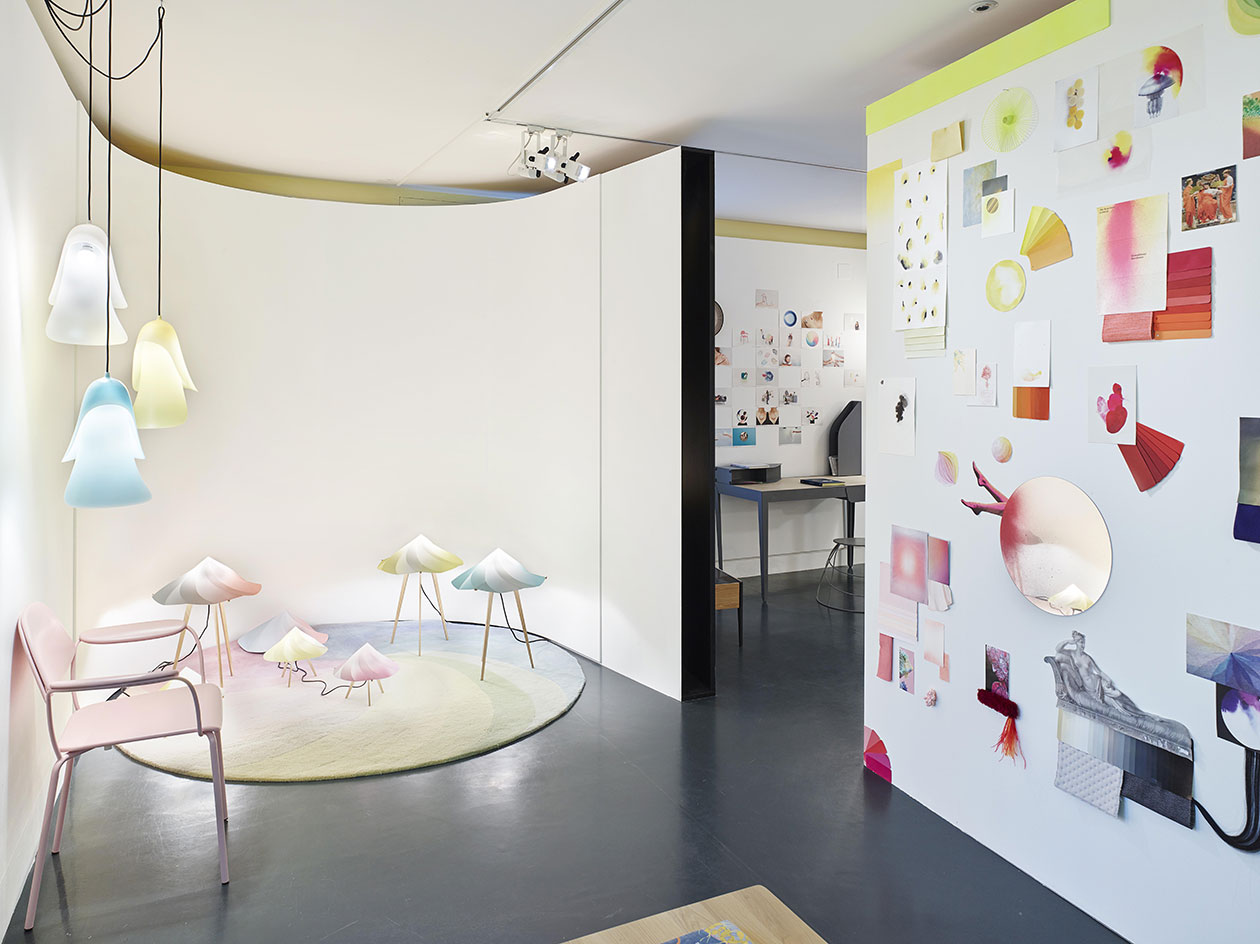
Intended as a whimsical investigation into the expressive potential of cold and warm colour palettes, Guisset explores their inherent ‘genderisation’ – where cold shades are seen as ‘masculine’ and warmer hues as ‘feminine’
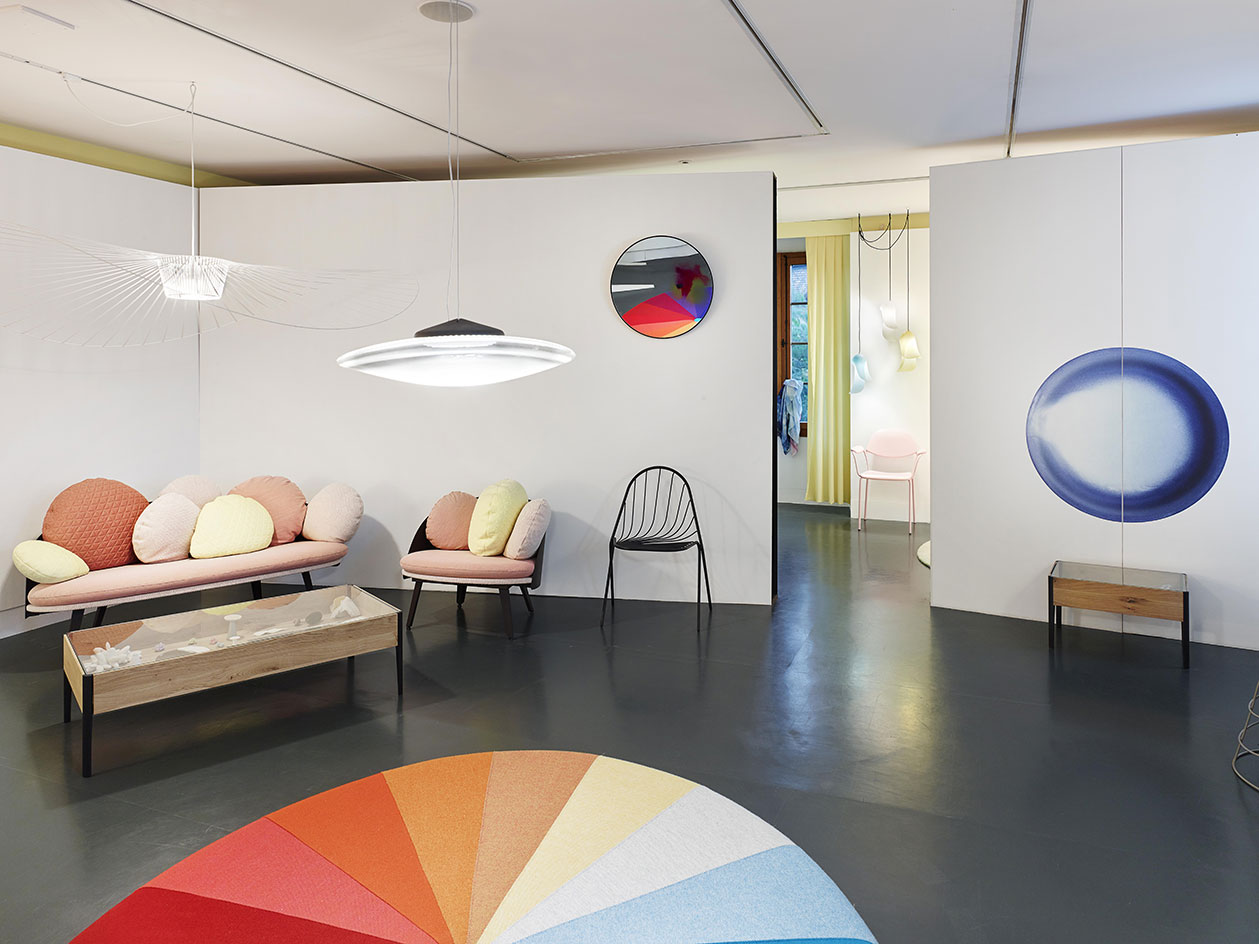
Part retrospective, too, the mirroring rooms are furnished in Guisset’s greatest designs.

Among them, her Ankara lights, pictured. The faceted lamps in metal are inspired by unfolding skirts. Courtesy of Constance Guisset

Created for Petite Friture, the 'Drapee' chair is made of steel wires, which appear to be draped as the lines unfold between the back and the seat. Courtesy of Constance Guisset
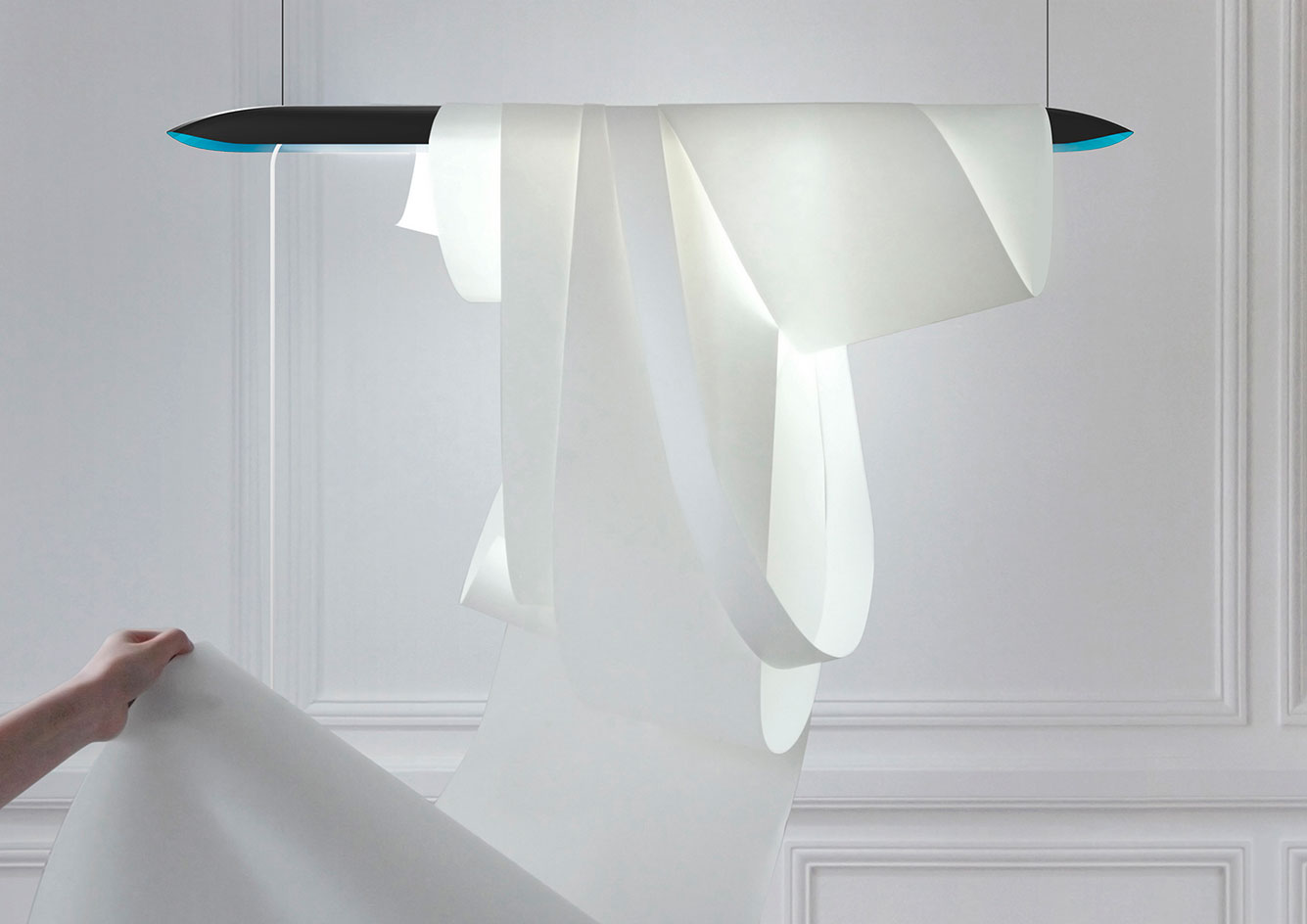
The prototype lamp ‘Angelin’ can take multiple shapes. A central metallic structure contains three rolls of paper which can be arranged and draped to create different levels of warmth and transparency. Courtesy of Constance Guisset
INFORMATION
‘Anima: Carte blanche to Constance Guisset’ is on view until 15 January 2017. For more information, visit the MUDAC website
ADDRESS
MUDAC
Place de la Cathédrale 6
1005 Lausanne
Receive our daily digest of inspiration, escapism and design stories from around the world direct to your inbox.
-
 Curvilinear futurism meets subtropical beaches at Not A Hotel’s ZHA-designed Okinawa retreat
Curvilinear futurism meets subtropical beaches at Not A Hotel’s ZHA-designed Okinawa retreatZaha Hadid Architects has revealed the design for the first property in Not A Hotel’s futuristic new Vertex collection, coming soon to southern Japan
-
 Gorden Wagener leaves the helm of Mercedes-Benz design after 28 years with the company
Gorden Wagener leaves the helm of Mercedes-Benz design after 28 years with the companyThe German designer is stepping down from the role of chief design officer at Mercedes-Benz. We look back at his influence and impact on the world of automotive and luxury design
-
 These Christmas cards sent by 20th-century architects tell their own stories
These Christmas cards sent by 20th-century architects tell their own storiesHandcrafted holiday greetings reveal the personal side of architecture and design legends such as Charles and Ray Eames, Frank Lloyd Wright and Ludwig Mies van der Rohe
-
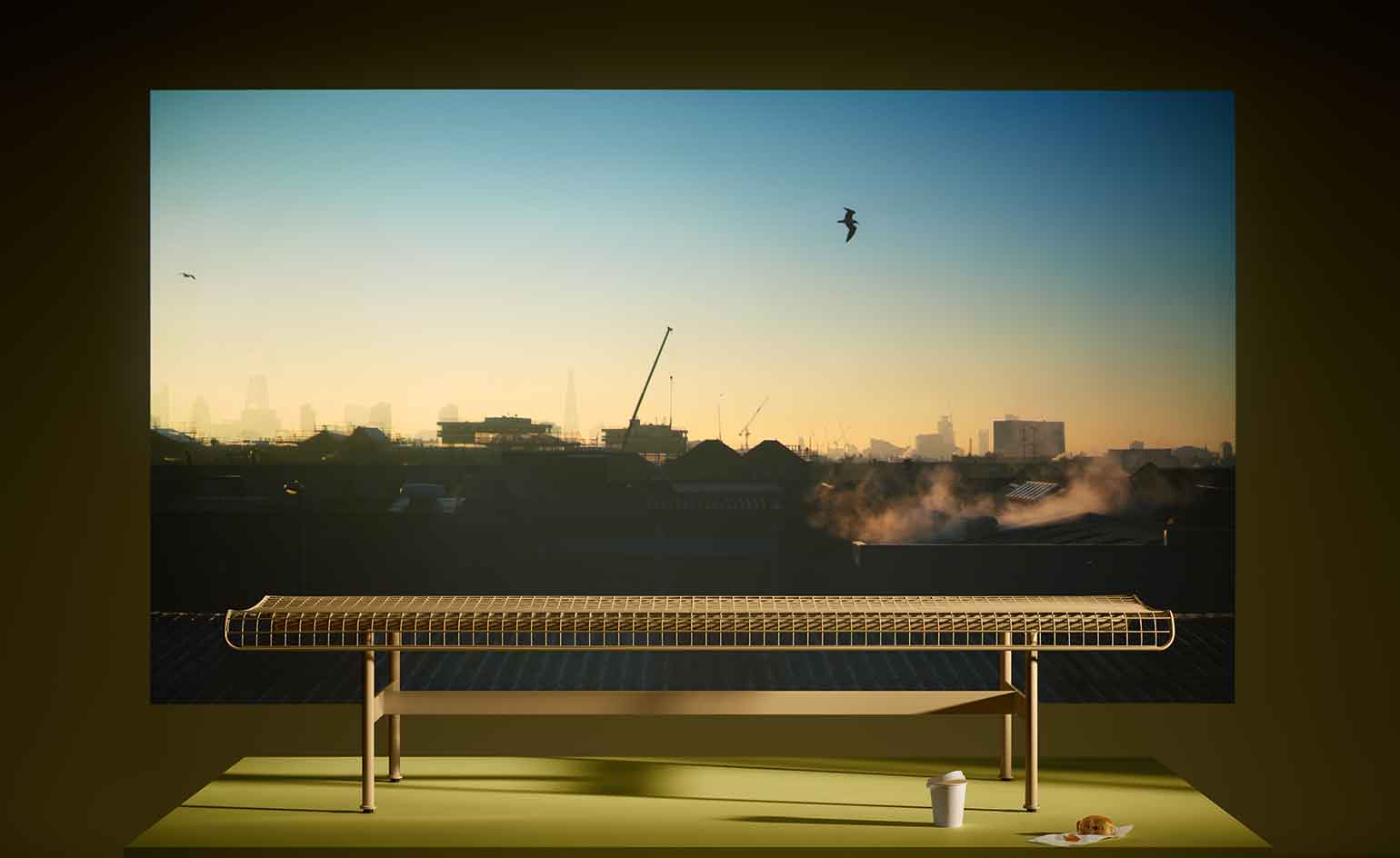 Munch Museum’s furniture is inspired by the artist’s colours
Munch Museum’s furniture is inspired by the artist’s coloursSustainability-focused Norwegian furniture company Vestre has created furniture designed by Andreas Engesvik and Jonas Stokke for the new Munch Museum in Oslo
-
 Molteni Museum opens in Ron Gilad’s glass cube
Molteni Museum opens in Ron Gilad’s glass cubeRon Gilad brings fresh perspective to the Molteni Museum’s Glass Cube in Giussano. Former Wallpaper* Milan editor and current Triennale Design Museum director Marco Sammicheli spoke to Ron Gilad and Giulia Molteni for our Summer 2020 issue to find out about the museum’s plans
-
 New V&A gallery explores contemporary history through design
New V&A gallery explores contemporary history through design‘Design: 1900 – Now’, a permanent gallery at the V&A in London, opens with a thematic display charting the 20th and 21st centuries’ most relevant social movements. We talk to curators Corinna Gardner and Johanna Agerman Ross to discover highlights from the collection
-
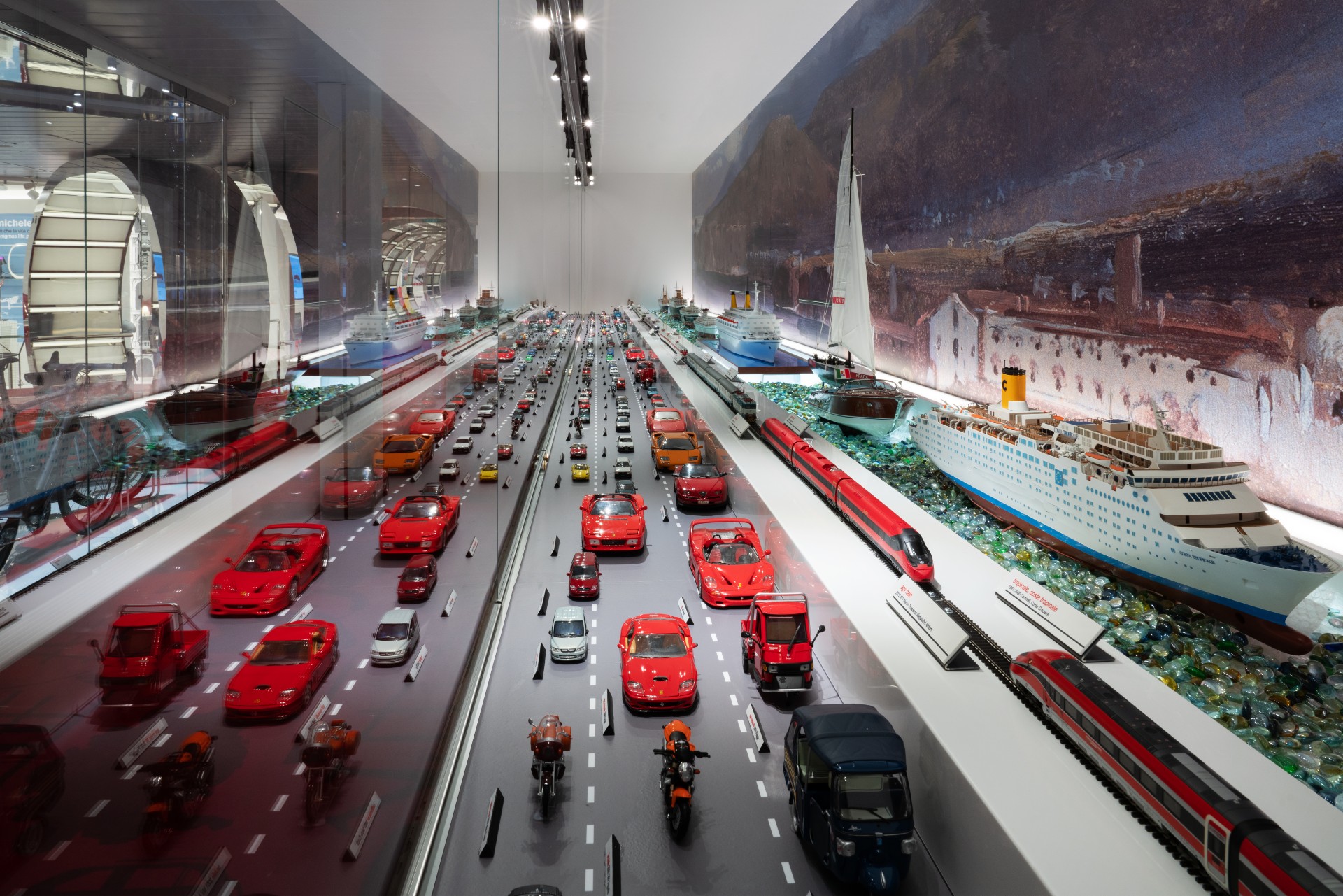 All aboard! Immersive design museum on a cruise ship celebrates Italian icons
All aboard! Immersive design museum on a cruise ship celebrates Italian iconsThe mobile museum is housed inside one of Italian company Costa Smeralda's cruiseship, featuring a selection of design icons and a futuristic set by Tihany Design
-
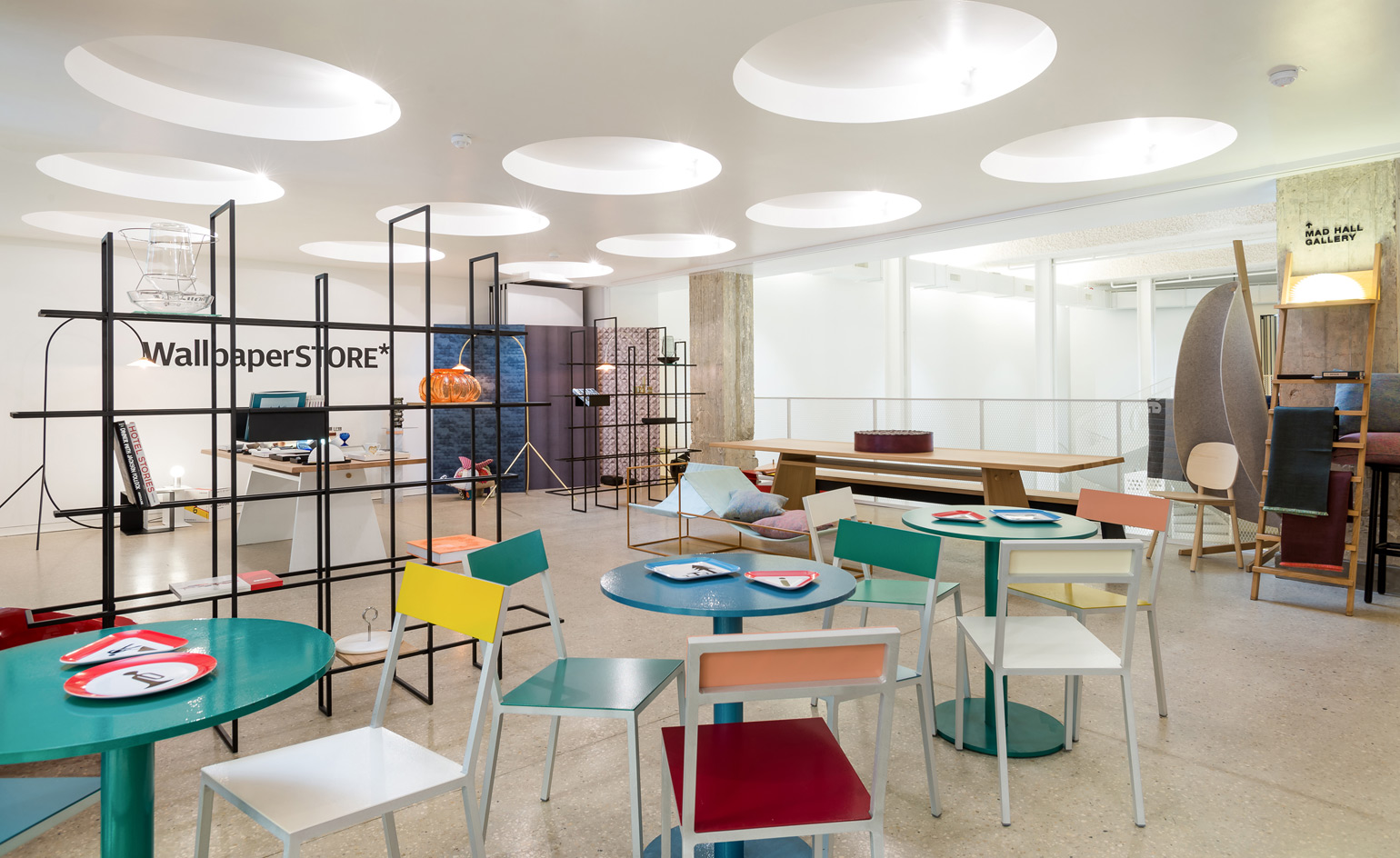 At MAD Museum in Brussels, Belgian design and a WallpaperSTORE* pop-up
At MAD Museum in Brussels, Belgian design and a WallpaperSTORE* pop-up -
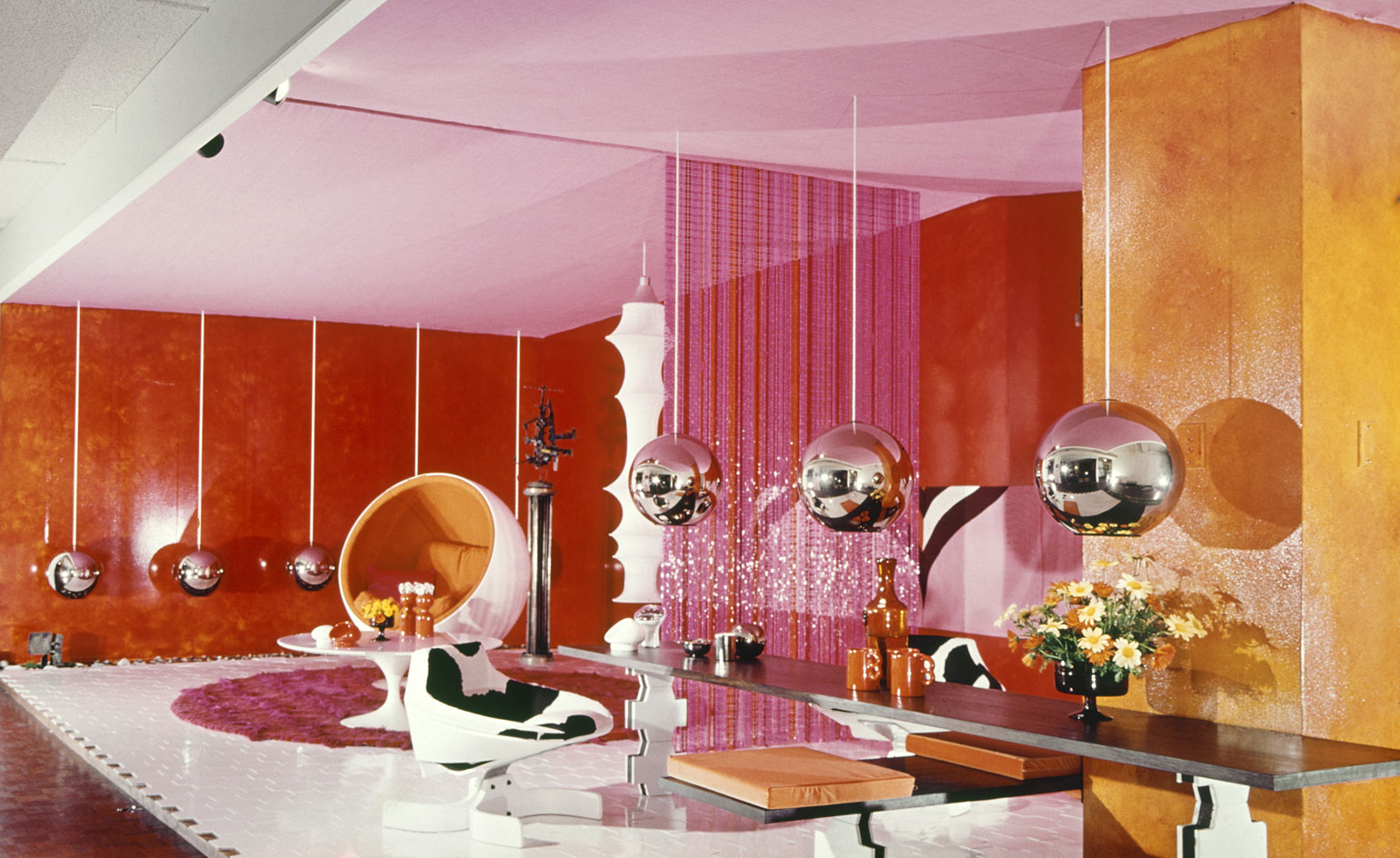 Pleasure island: the decadent interiors of Australia’s first lady of modernist design
Pleasure island: the decadent interiors of Australia’s first lady of modernist design -
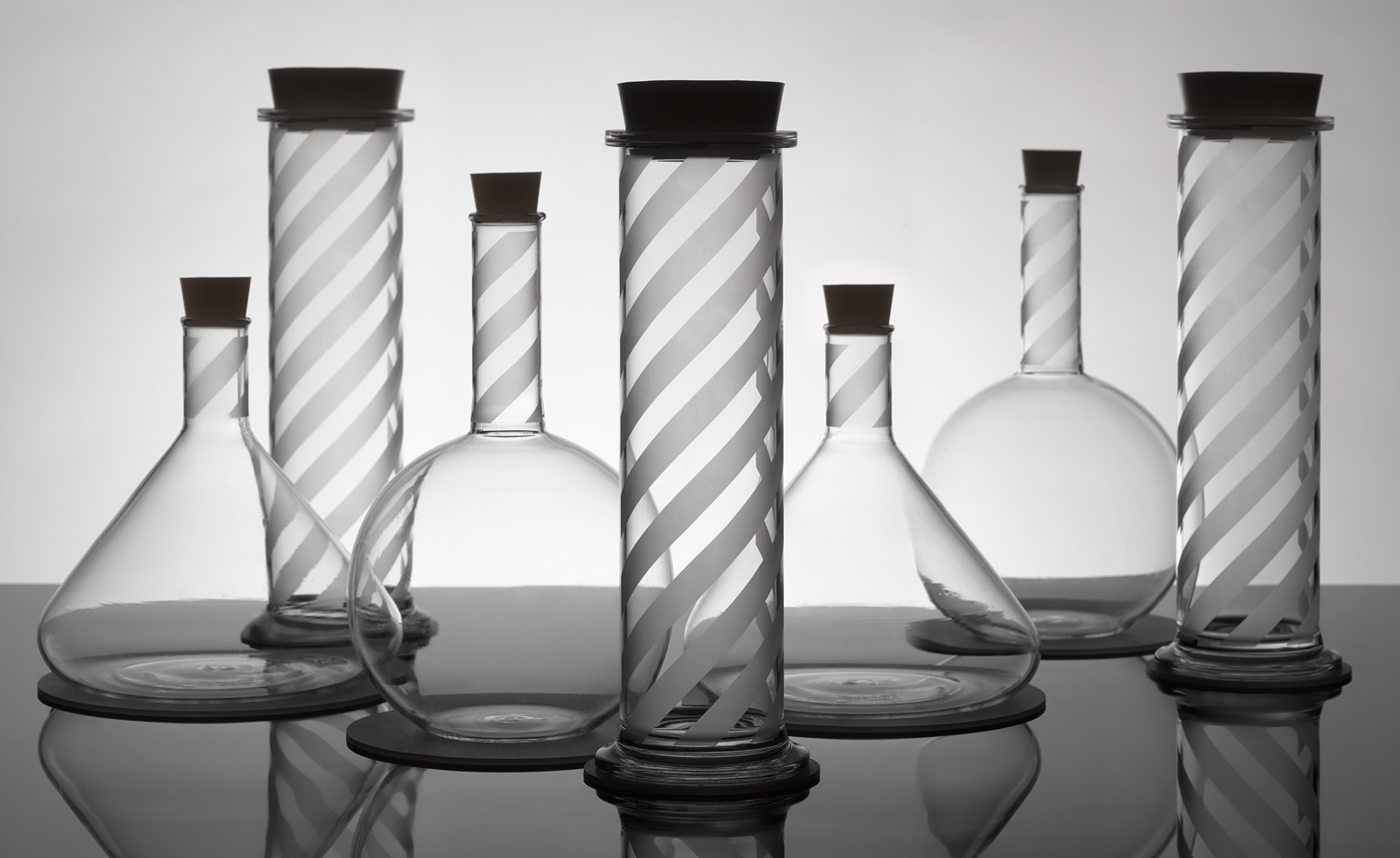 The worlds of science, design and rave culture collide in Peter Saville’s glassware
The worlds of science, design and rave culture collide in Peter Saville’s glassware -
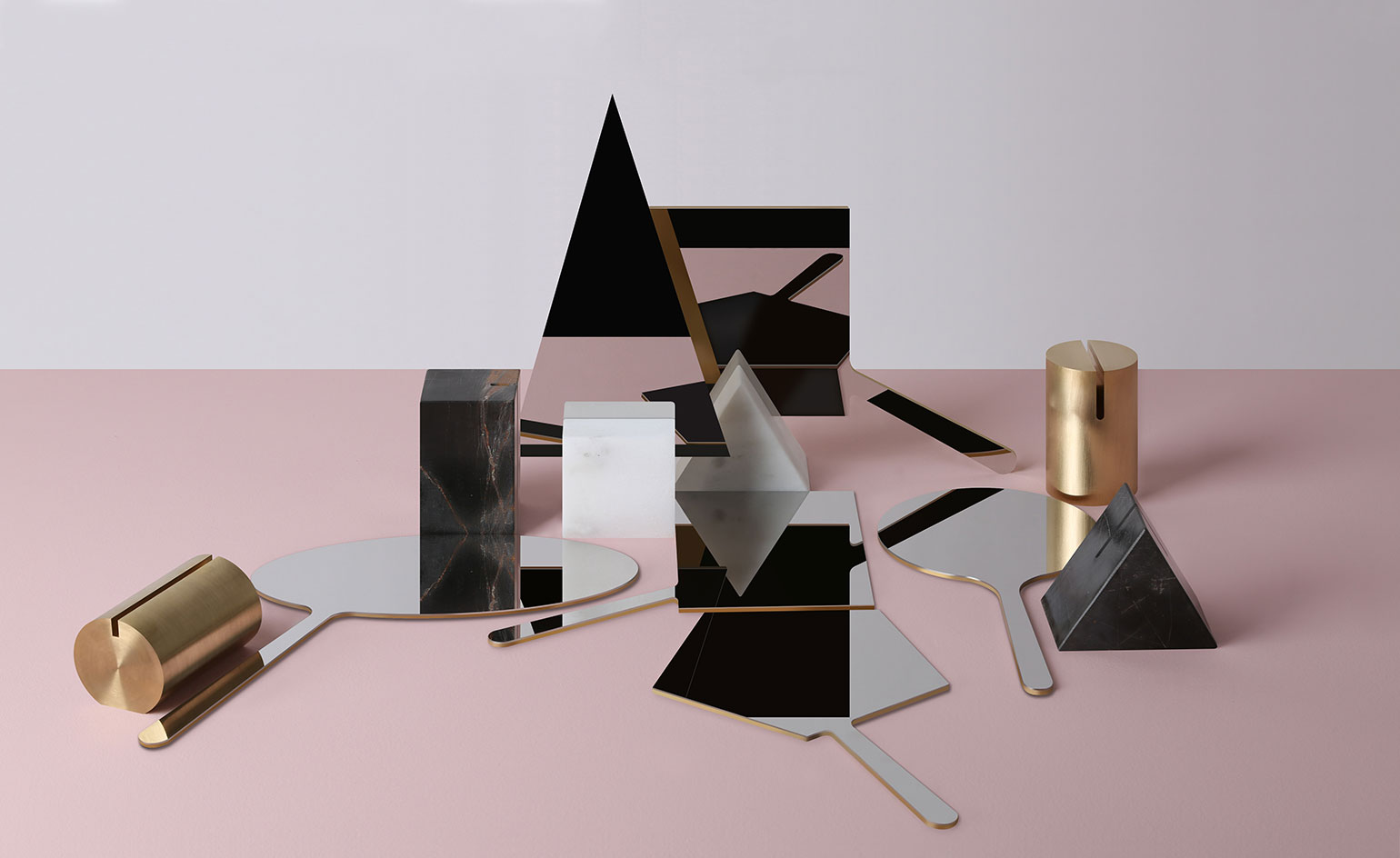 Vintage reflections: Richard Yasmine’s minimalist mirrors are infused with nostalgia
Vintage reflections: Richard Yasmine’s minimalist mirrors are infused with nostalgia